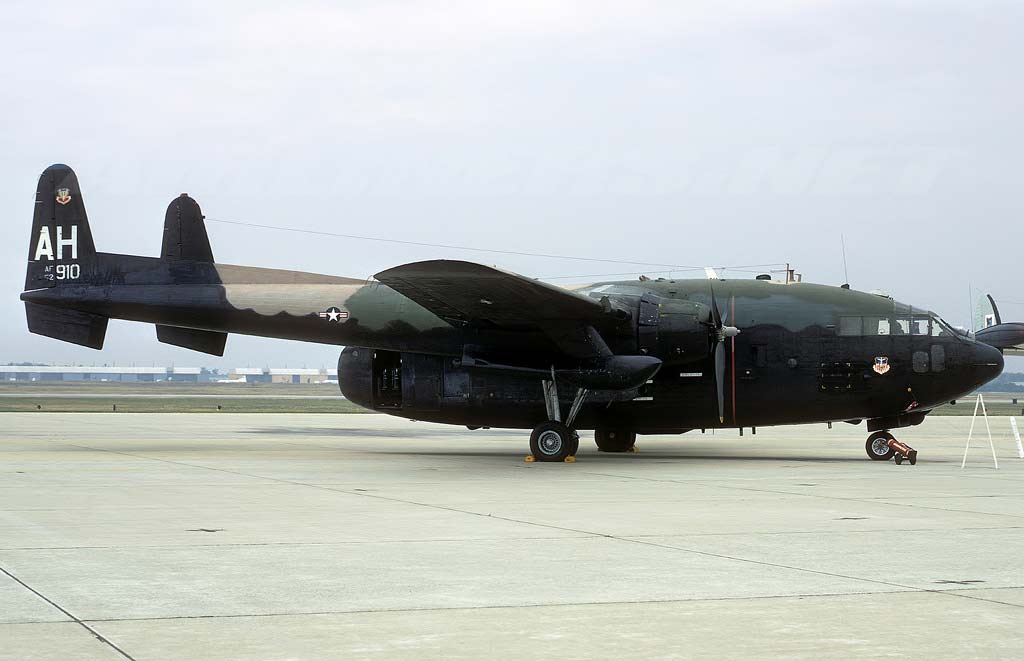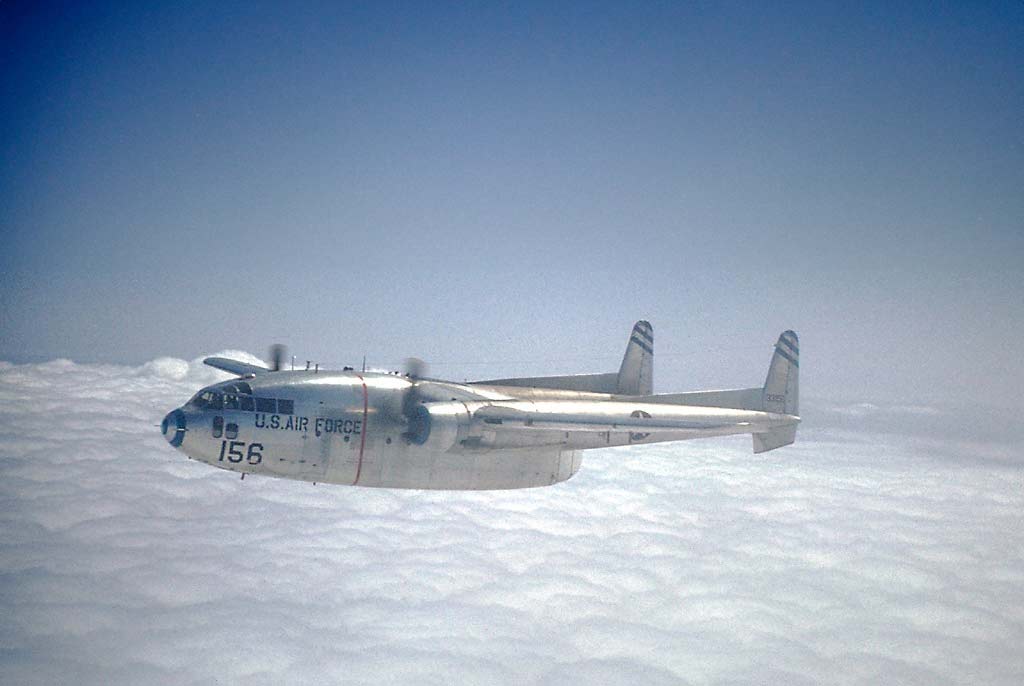The Fairchild AC-119 gunship, known as “Shadow” and “Stinger,” was a formidable air support and anti-armor aircraft with potent armament and advanced avionics.
In brief
The AC-119 was designed from the C-119 “Flying Boxcar,” transformed into a gunship for the Vietnam War. It featured Wright R-3350-85 radial engines and additional jet engines on the “Stinger” variant for improved performance. The AC-119G “Shadow” carried 7.62mm miniguns, while the AC-119K “Stinger” was equipped with both miniguns and 20mm Vulcan cannons. These aircraft were pivotal in close air support, air interdiction, and armed reconnaissance, especially effective in disrupting enemy supply lines.
The Fairchild AC-119 was developed to fulfill the USAF’s need for an effective gunship, succeeding the AC-47 and operating alongside the AC-130 during the Vietnam War. It was an adaptation of the C-119 transport, retrofitted for a gunship role to provide intense firepower and support ground operations effectively.

History of the Development
The development of the AC-119 was a response to the operational demands in Vietnam, where slow-flying gunships could deliver sustained and precise firepower. The USAF, having experienced the effectiveness of the AC-47 gunship, sought a more capable aircraft leading to the AC-119’s introduction. The “Shadow” and “Stinger” variants were designed to offer enhanced night-time and all-weather capabilities, supporting troops and disrupting enemy logistics with their significant loiter time and firepower.
Design
The AC-119 design incorporated robust armoring, advanced sensor systems, and powerful armaments, enabling it to loiter and engage ground targets effectively. The “Stinger” variant also included auxiliary jet engines for added thrust. The aircraft’s design allowed it to carry an array of weaponry, including Gatling guns and autocannons, making it a formidable platform for close air support and interdiction missions.
Performance
Equipped with two Wright R-3350-85 radial piston engines, the AC-119 could reach speeds of 210 mph and had a service ceiling of 23,300 feet. Its operational range extended to 1,950 miles, ensuring it could cover vast areas during missions. The additional jet engines on the AC-119K improved its overall performance, especially during heavily loaded flights.
Variants
The primary variants were the AC-119G “Shadow,” focusing on close air support with 7.62mm miniguns, and the AC-119K “Stinger,” which added 20mm Vulcan cannons and jet engines for enhanced performance and firepower, tailored for interdiction missions.

Military Use and Combat
The military use and combat roles of the Fairchild AC-119 gunships, specifically the “Shadow” and “Stinger” variants, were pivotal during the Vietnam War, showcasing their effectiveness in various operational contexts. The AC-119s were developed to provide the USAF with an aerial platform capable of delivering sustained and precise firepower, particularly suitable for the unique combat environment in Vietnam.
AC-119G “Shadow”
The “Shadow” variant was primarily utilized for close air support (CAS) and airbase defense missions. It was equipped with four 7.62mm miniguns and was capable of flying at slow speeds for extended periods, making it ideal for protecting ground troops engaged in combat. The aircraft’s ability to loiter over the battlefield allowed it to provide continuous air support, illuminating the battlefield with flares and engaging enemy forces with its miniguns. This support was crucial during nighttime operations or when friendly forces were in close contact with enemy troops.
AC-119K “Stinger”
The “Stinger” variant, on the other hand, was more heavily armed, featuring additional 20mm Vulcan cannons and underwing-mounted jet engines to enhance its performance. This variant was specifically designed for interdiction missions, particularly effective in disrupting the Ho Chi Minh Trail, a critical supply route used by North Vietnamese forces. The “Stinger” was adept at truck hunting, using its powerful armament to destroy enemy convoys and logistics vehicles, thereby hampering the enemy’s ability to sustain its forces in the South.
Tactical Advantages and Operational Impact
Both variants of the AC-119 played crucial roles in denying the enemy freedom of movement at night and during adverse weather conditions, when traditional air support was less effective. Their presence overhead could deter enemy activities or decisively engage them, contributing significantly to the overall air interdiction campaign in Southeast Asia. The AC-119s were instrumental in the suppression of enemy air defenses, providing a level of air support that profoundly affected the strategic landscape of the conflict.
The gunships’ ability to provide direct, accurate, and sustained fire made them invaluable assets, often called upon to support troops in contact, defend firebases, hamlets, and outposts, and interdict enemy supply lines. Their psychological impact on enemy morale was notable, as the persistent presence of these gunships could hinder enemy operations and movements.
The AC-119 Shadow/Stinger gunships were critical assets during the Vietnam War, offering unparalleled support to ground forces and significantly disrupting enemy operations. Their development marked a significant evolution in the use of gunships, influencing future designs and tactics in aerial warfare.
Back to the Special Aircraft section